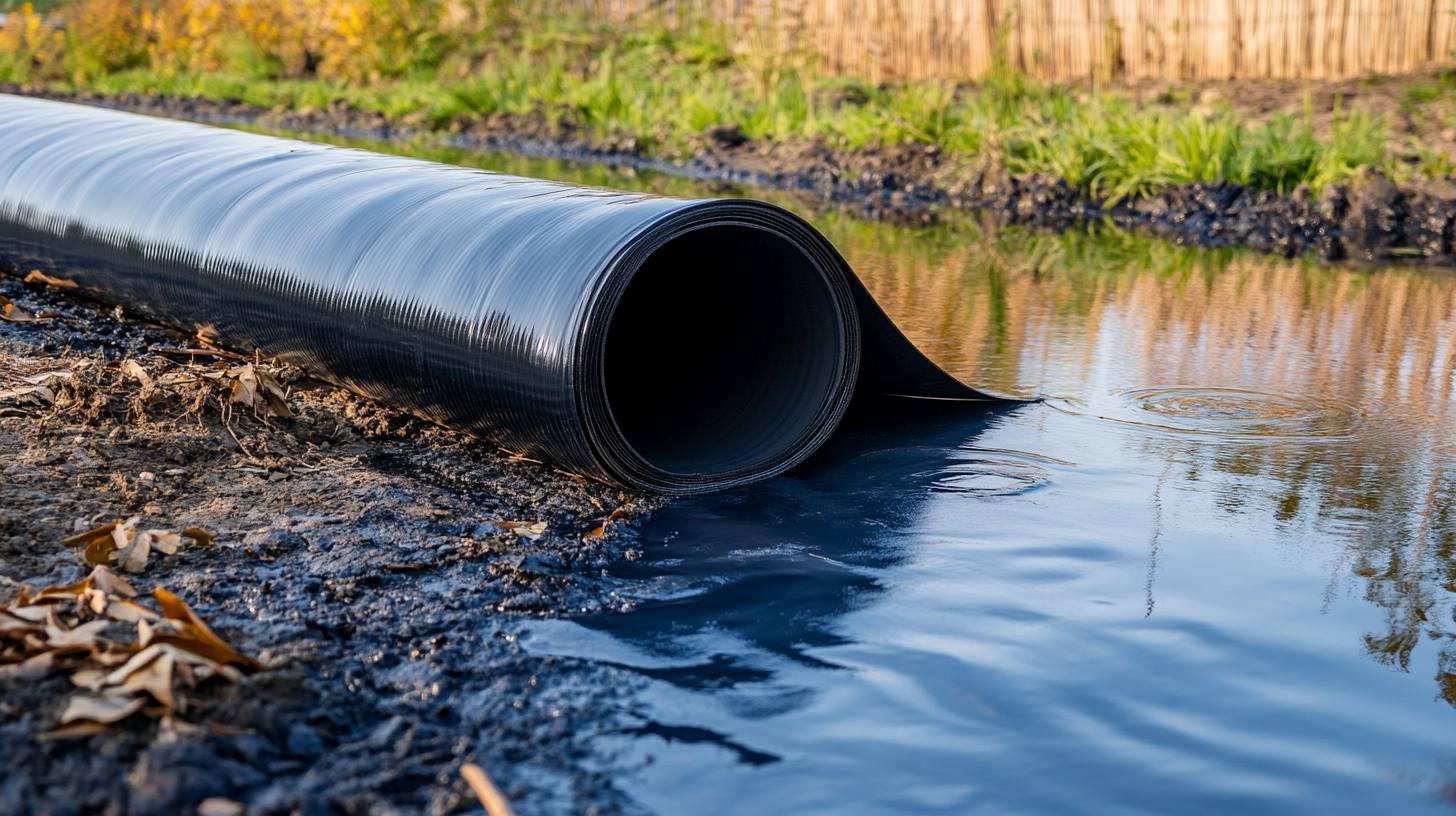Inquiry
Form loading...
- Phone
- E-mail
The global HDPE geomembrane market is poised for significant growth as we look towards 2025, driven by increasing demand across various sectors such as waste management, mining, and construction. According to a recent report by MarketsandMarkets, the HDPE geomembrane market is projected to reach USD 5.05 billion by 2025, reflecting a compound annual growth rate (CAGR) of 9.2% from 2020. This remarkable growth can be attributed to the material's exceptional properties, including durability, impermeability, and resistance to environmental stressors. As urbanization and environmental regulations intensify, industries are increasingly adopting HDPE geomembranes for application in landfill liners, water conservation projects, and aquaculture. The evolving trends in the market also indicate a heightened focus on sustainable and innovative production methods. Thus, understanding these emerging trends is crucial for stakeholders looking to navigate the complexities of the HDPE geomembrane landscape in the upcoming years.

The global HDPE geomembrane market is poised for significant growth by 2025, driven primarily by emerging applications across various industries. A recent report by Market Research Future estimates that the geomembrane market will expand at a CAGR of approximately 10% during this period, fueled by increasing demand for environmentally sustainable solutions in sectors like waste management, mining, and agriculture. The versatility of HDPE geomembranes in providing reliable containment solutions, particularly in landfills and tailings storage facilities, emphasizes their growing importance.
One of the most notable trends is the rising usage of HDPE geomembranes in water management systems. As global water scarcity becomes a pressing issue, many regions are adopting HDPE geomembranes for pond lining and reservoir applications to prevent water loss due to evaporation and seepage. According to a report by Research and Markets, the segment of water containment applications is expected to witness substantial growth, reaching nearly $1 billion by 2025. Additionally, advancements in technology are enhancing the performance characteristics of HDPE geomembranes, making them more durable and cost-effective, which further accelerates their adoption in emerging markets worldwide.
The global HDPE geomembrane market is poised for significant transformation, driven primarily by technological advancements that enhance performance and durability. Innovations in manufacturing processes, such as extrusion and calendaring, are yielding geomembranes with superior mechanical properties and resistance to environmental stressors. These advancements not only improve the longevity of geomembranes used in various applications, including landfill liners and water containment systems, but also ensure they meet stringent environmental regulations.
The integration of advanced materials and production technologies holds promise for addressing some of the challenges faced by industries reliant on HDPE geomembranes. For example, the introduction of sustainable materials, like biocomposites, aims to reduce the carbon footprint of geomembrane production while maintaining high-performance standards. Furthermore, increased industrialization and infrastructure development globally will likely drive demand for durable geosynthetics, encouraging further investments in research and development. As the market evolves, stakeholders must remain vigilant about emerging trends, ensuring that technological advances align with sustainability goals and market needs.
This chart illustrates the projected growth in demand for HDPE geomembranes driven by technological advancements. The data reflects the expected market size in million USD from 2023 to 2025.
As sustainability becomes a central theme in industrial practices, the HDPE geomembrane market is witnessing significant transformations driven by environmental regulations. These regulations emphasize the importance of using high-density polyethylene (HDPE) due to its durability and resistance to various environmental factors. Companies are increasingly adopting HDPE geomembranes in applications such as waste management, agriculture, and water containment, as they align with eco-friendly initiatives and compliance requirements.
The push for a circular economy is also reshaping the landscape of this market. Innovations in recycling technologies for HDPE materials are gaining traction, enabling manufacturers to produce geomembranes with a lower carbon footprint. This not only meets regulatory demands but also appeals to environmentally conscious consumers and businesses. Overall, the integration of sustainability practices into the HDPE geomembrane market signals a shift toward not only complying with environmental mandates but also championing restorative practices that preserve natural resources for future generations.
The global HDPE geomembrane market is poised for significant growth by 2025, driven by several regional market dynamics and key players across different geographies. According to recent reports, the demand for HDPE geomembranes is expected to increase as industries focus on environmental protection, waste management, and mining applications. Regions such as North America and Asia-Pacific are anticipated to lead in market share due to rapid industrialization and infrastructure development.
Innovations in HDPE geomembrane technology are enhancing durability and efficiency, attracting investment from major manufacturers. For instance, the growing trend towards sustainable materials reflects a broader shift in the construction and environmental sectors where HDPE geomembranes are increasingly being recognized for their eco-friendly properties. By 2025, analysts project a robust compound annual growth rate (CAGR) within these regions, indicating a competitive landscape among leading players who are aligning their strategies to capture emerging market opportunities effectively.
Furthermore, as the focus on regulatory compliance intensifies, companies in different geographic regions are adapting their product offerings to meet specific local requirements. The insights from market research reveal that aligning with sustainability goals and embracing technological advancements will be crucial for businesses aiming to thrive in the evolving HDPE geomembrane market landscape.

The HDPE geomembrane industry is positioned for substantial growth by 2025, driven by an increasing demand across various sectors, including waste management, mining, and water containment. According to recent industry reports, the global HDPE geomembrane market is projected to reach USD 2.9 billion by 2025, expanding at a CAGR of over 9% from 2020. Crucially, the growing awareness of environmental sustainability is prompting industries to adopt more resilient and eco-friendly materials, creating significant opportunities for HDPE geomembrane manufacturers.
However, the industry also faces challenges that may influence its trajectory. The fluctuating prices of raw materials, particularly polyethylene, can impact production costs and profit margins. Furthermore, stringent environmental regulations necessitate that manufacturers invest in innovation to develop advanced materials that meet national and international standards. Reports suggest that companies focusing on high-performance geomembranes with enhanced durability and UV resistance will likely gain a competitive edge in addressing these challenges.
The future of HDPE geomembranes will also be shaped by technological advancements. The increasing use of geocells in various applications has created synergies, as these products complement geomembranes in providing structural integrity and reducing soil erosion. The geocell market alone is projected to generate significant opportunities from 2025 to 2032, indicating a broader shift towards integrated solutions in construction and environmental applications. This convergence of technologies signals an exciting phase for the HDPE geomembrane industry as it navigates both challenges and opportunities in the coming years.

